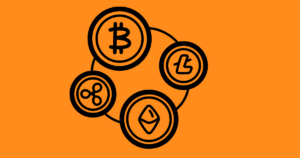Everything You Need to Know About Blockchain Games. Blockchain games use blockchain technology to enhance gameplay and enable features such as digital asset ownership, interoperability, and decentralized control. This integration creates a new gaming paradigm where players earn real-world value through in-game activities.

Key features of blockchain games
1. Decentralization
Unlike traditional games, which a single organization controls, blockchain games can be controlled by decentralized autonomous organizations (DAOs). This structure increases flexibility and reduces the risk of game interruptions.
2: Play 2 Earn
Players can earn cryptocurrency or non-transferable tokens (NFTs) by playing the game. These assets can be traded in a decentralized market, giving players a financial incentive to participate.
3. Real-world ownership
In a blockchain game, players own the items known as NFTs. This allows them to sell or trade these items freely, unlike traditional games where in-game purchases often have no resale value.
4. Interoperability
Blockchain technology allows items from one game to be used in another game, expanding the potential market for digital items and increasing player engagement across different gaming environments.
How blockchain technology works in games
Blockchain technology supports all aspects of games:
Smart contracts: These are self-executing contracts where the contracts are written directly into the code. This facilitates transactions and ensures that the game mechanisms work as intended without intermediaries.
Digital assets: These can be converted into NFTs, giving players unique ownership rights and the opportunity to trade these assets on the secondary market.
Security and transparency: Blockchain-encrypted ledgers can securely store account information and provide transparency regarding the scarcity and ownership of assets, increasing player security.
The advantages of blockchain gambling
Financial incentives: The P2E model allows players to make money from gambling, bridging the gap between fun and making money. This model is particularly attractive to players in developing countries seeking alternative employment opportunities.
Increased player control: Players retain control over their data and assets, creating a more exciting and personalized gaming experience.
Reduced risk of asset loss: Unlike traditional gaming, where server issues can result in the loss of items, the blockchain ensures that players’ funds are safe.
The challenges of blockchain gambling.
While blockchain gambling has many advantages, it also presents many challenges:
Technical hurdles: Many potential players have difficulty creating cryptocurrency wallets or understanding blockchain mechanics, which limits the games’ accessibility.
Legal issues: The legal environment for cryptocurrencies and non-financial digital currencies still needs to be clarified. Developers must understand the legal framework to avoid potential problems with securities law.
Market volatility: The value of cryptocurrencies can fluctuate significantly, posing a risk to players who have invested time and resources in acquiring digital assets.
Blockchain gaming represents a significant development in the gaming industry, offering players new financial opportunities through the physical possession of digital assets.
Despite challenges related to accessibility and regulation, it has the potential to transform the gaming experience and redefine the exchange of value in games. Games will likely evolve and attract developers and players as blockchain technology matures.
The most popular blockchain games today
Among the most popular blockchain games in October 2024 is Pixels, which currently tops the list with around 750,000 active unique wallets per day. Other notable games include Axie Infinity, a full-fledged game in which players collect and fight creatures called Axies.
The Sandbox, a meta-universe game in which players create and monetize their virtual worlds; and Splinterlands, an online game in which players collect cards, trade them, and play each other.
Splinterlands is a collectable card game in which players can collect, trade, and play digital cards against each other; Illuvium is a role-playing game with an open-ended story that involves mythological creatures and strategic combat; and Alien Worlds is a space exploration game that combines NPCs and tokens.
How the play-to-earn model works in blockchain games
In blockchain games, the play-to-earn (P2E) model works so that players can earn cryptocurrency or NFTs while playing the game by participating in various activities such as battles, missions, or trading. Successful activities generate NFT tokens or coins, representing ownership of digital assets.
These tokens can then be sold on decentralized markets or converted into fiat currency, allowing players to monetize their gaming experience.
Risks associated with blockchain gambling
However, there are also risks associated with blockchain gambling. Market volatility is a significant issue, as the value of cryptocurrencies can fluctuate significantly, affecting the value of the gambling assets.
Furthermore, regulatory uncertainty is a challenge for both developers and players, as the legal environment for cryptocurrencies is constantly changing. There are also technical hurdles; new players may need help setting up wallets or understanding the mechanics of blockchains, which can limit access.
Protecting the privacy of players in blockchain games
There are several ways to protect players’ privacy in blockchain games. Decentralization plays an important role, as the data is stored in a decentralized network, reducing the risk of a centralized hack. Encryption can be used to protect sensitive data, and the inherent transparency of blockchain technology ensures that all transactions are securely recorded, making fraud virtually impossible.
The difference between NFTs and cryptocurrencies in the blockchain game
NFTs and cryptocurrencies are integral to the blockchain game but serve different purposes. NFTs are unique digital assets representing ownership of a specific item, such as a character or skin, and are irreplaceable; each NFT has different characteristics and value. Conversely, cryptocurrencies are digital currencies used for in-game transactions that allow players to purchase items or obtain rewards. Cryptocurrencies are fungible; each unit can be exchanged for another unit of the same currency. This distinction will enable players to own individual items while using the shared currency for economic activities.